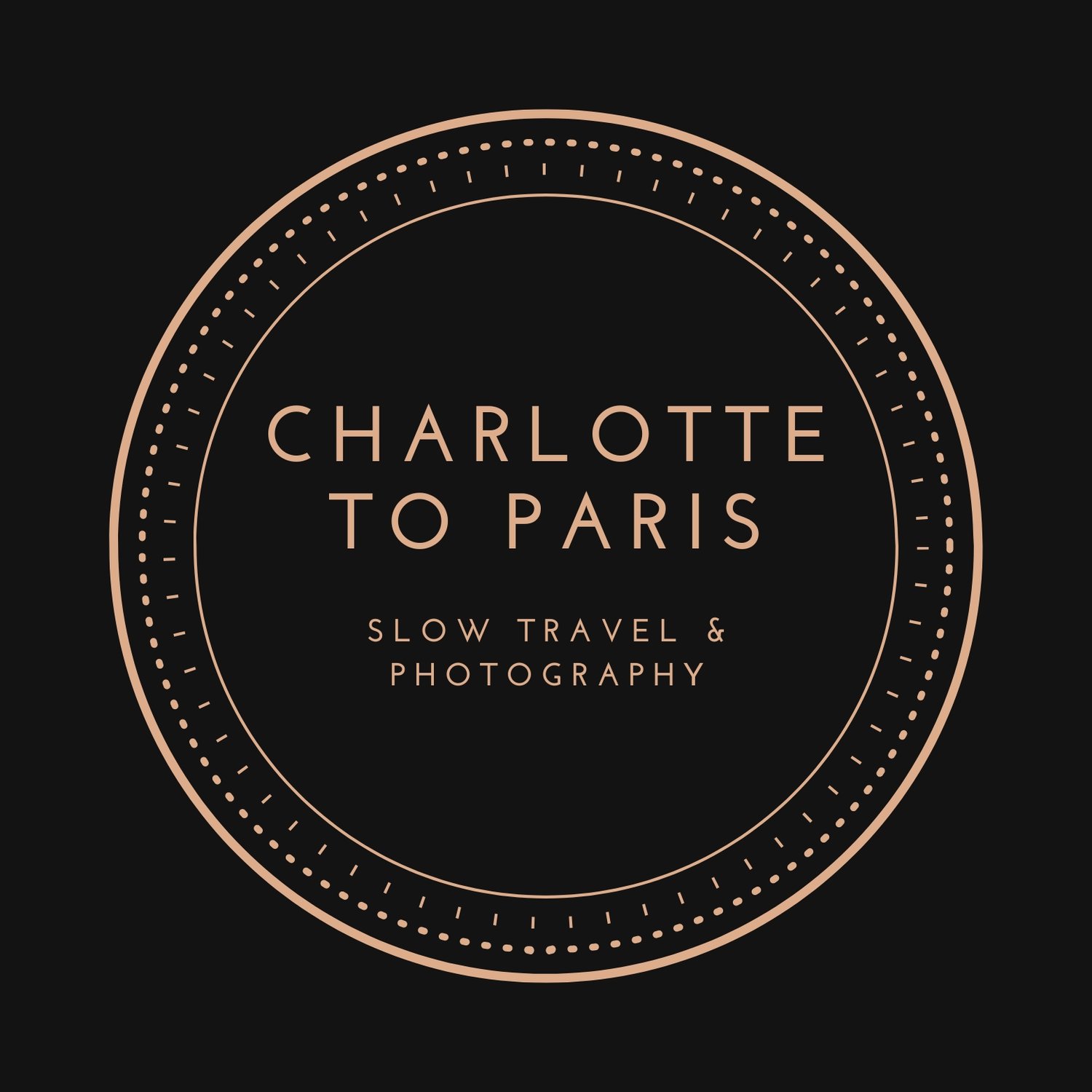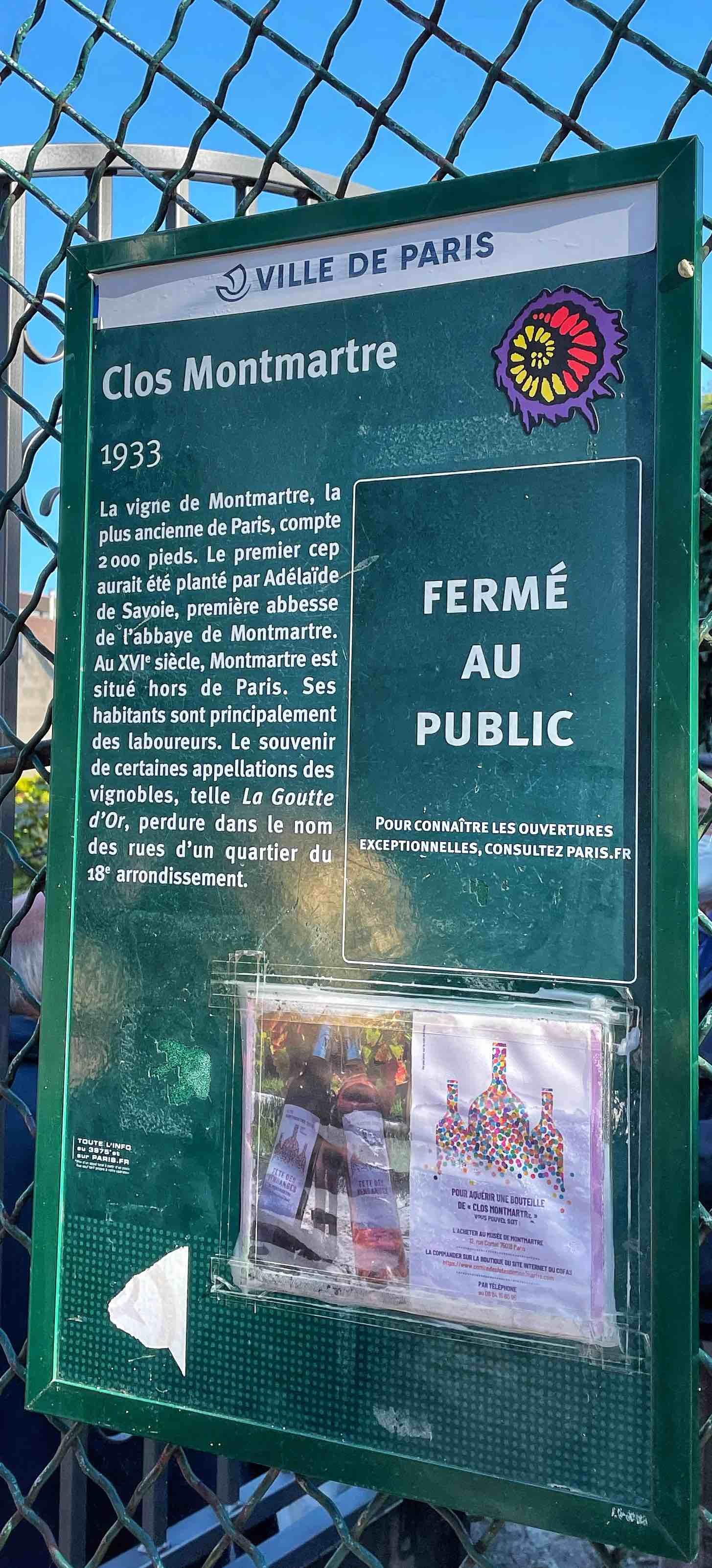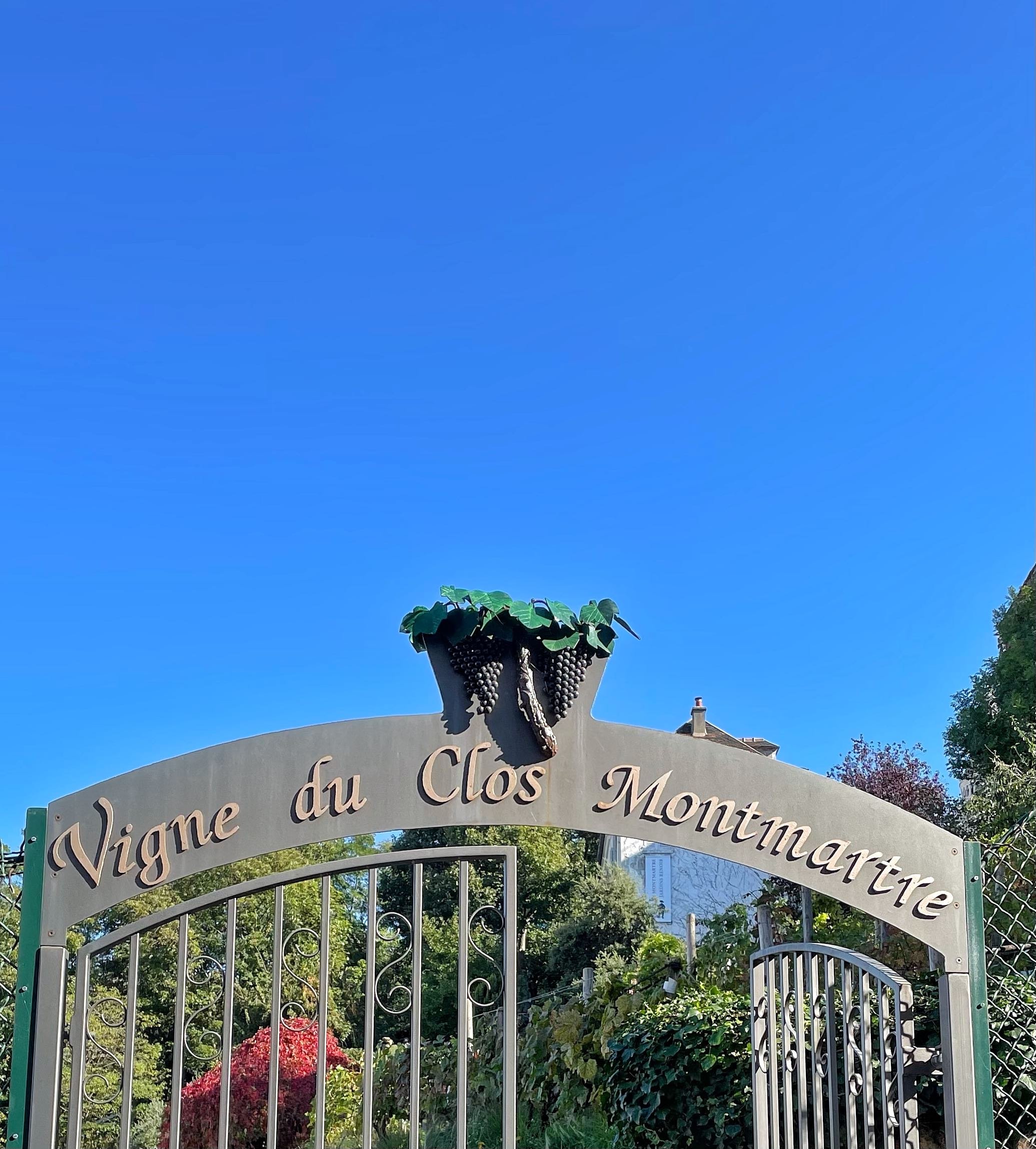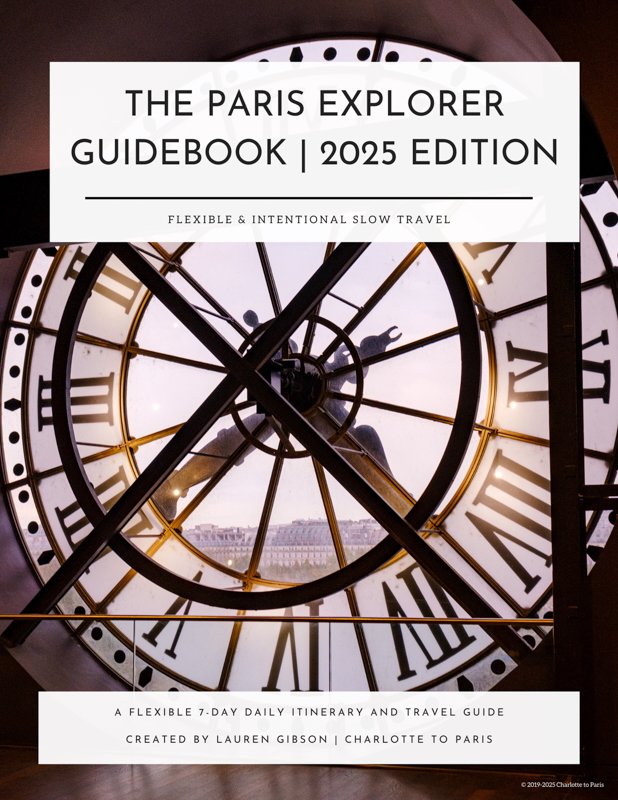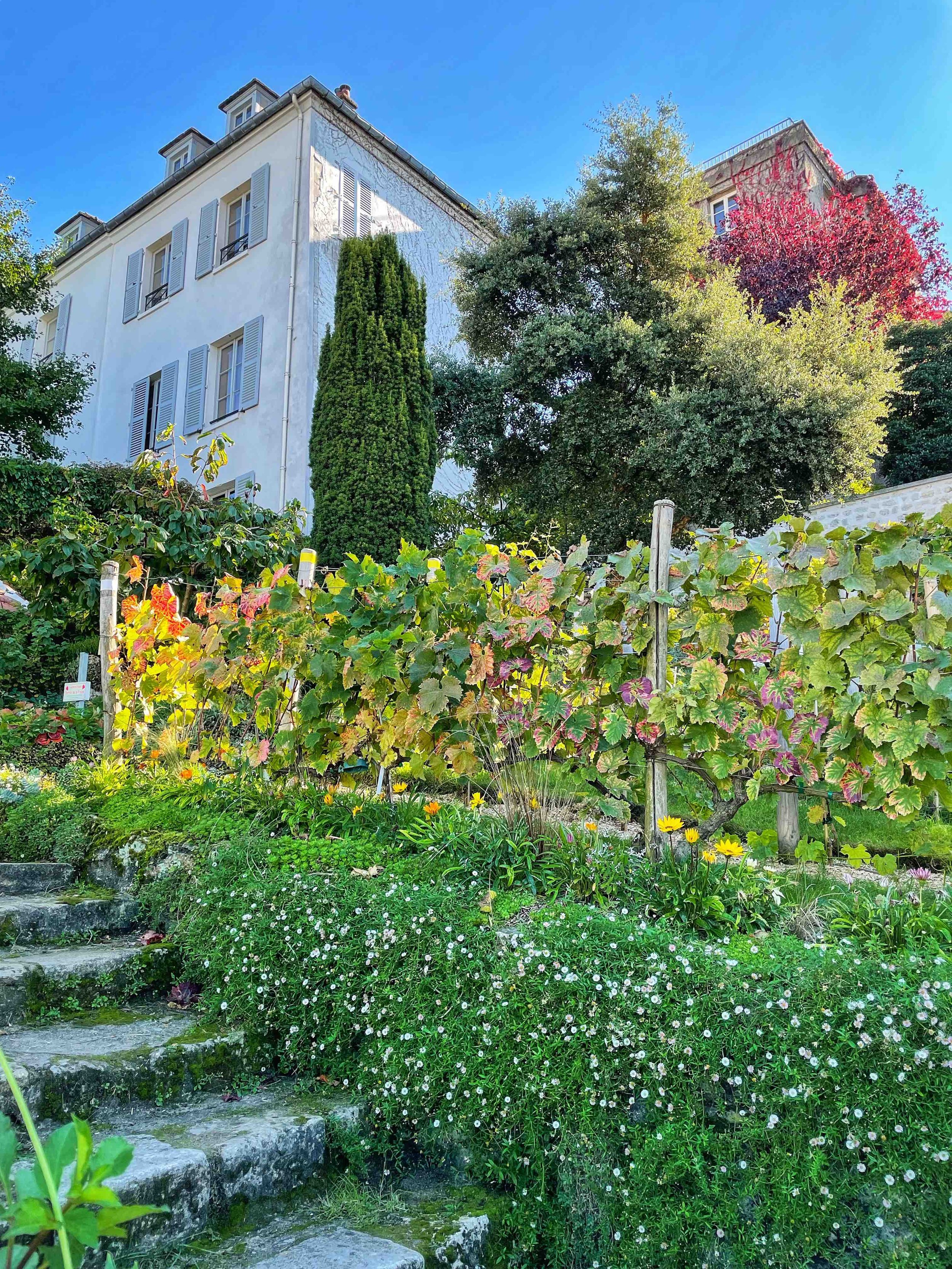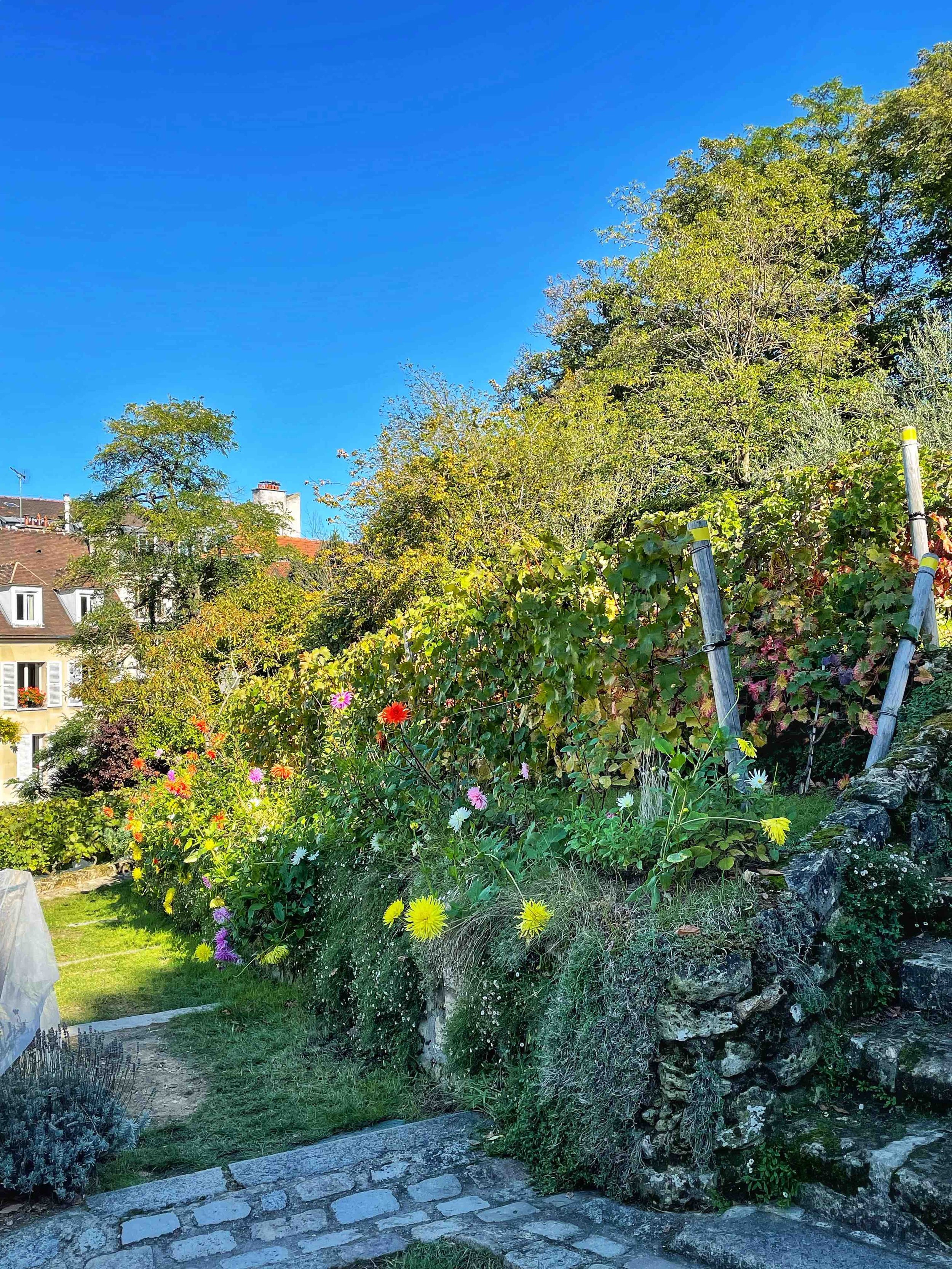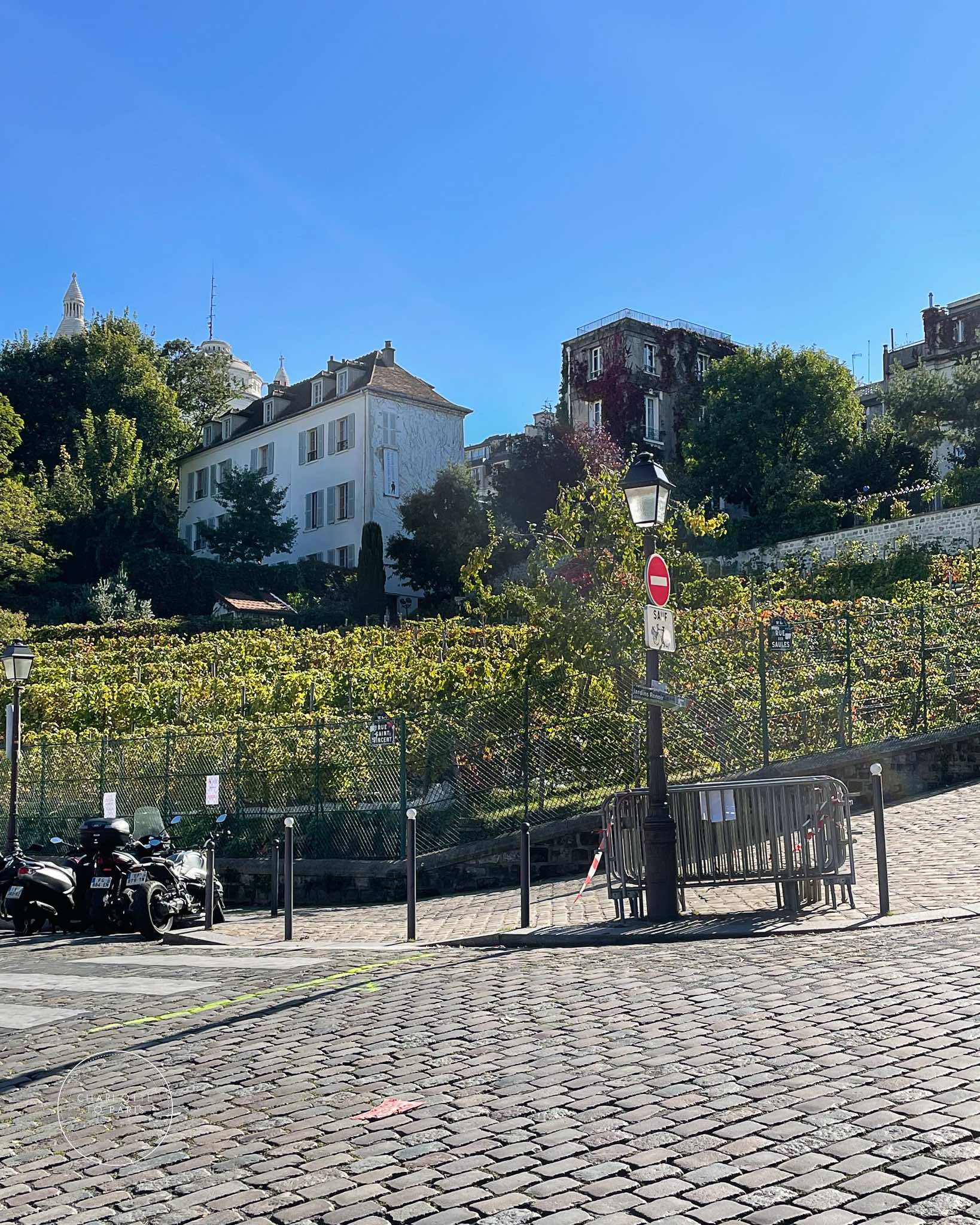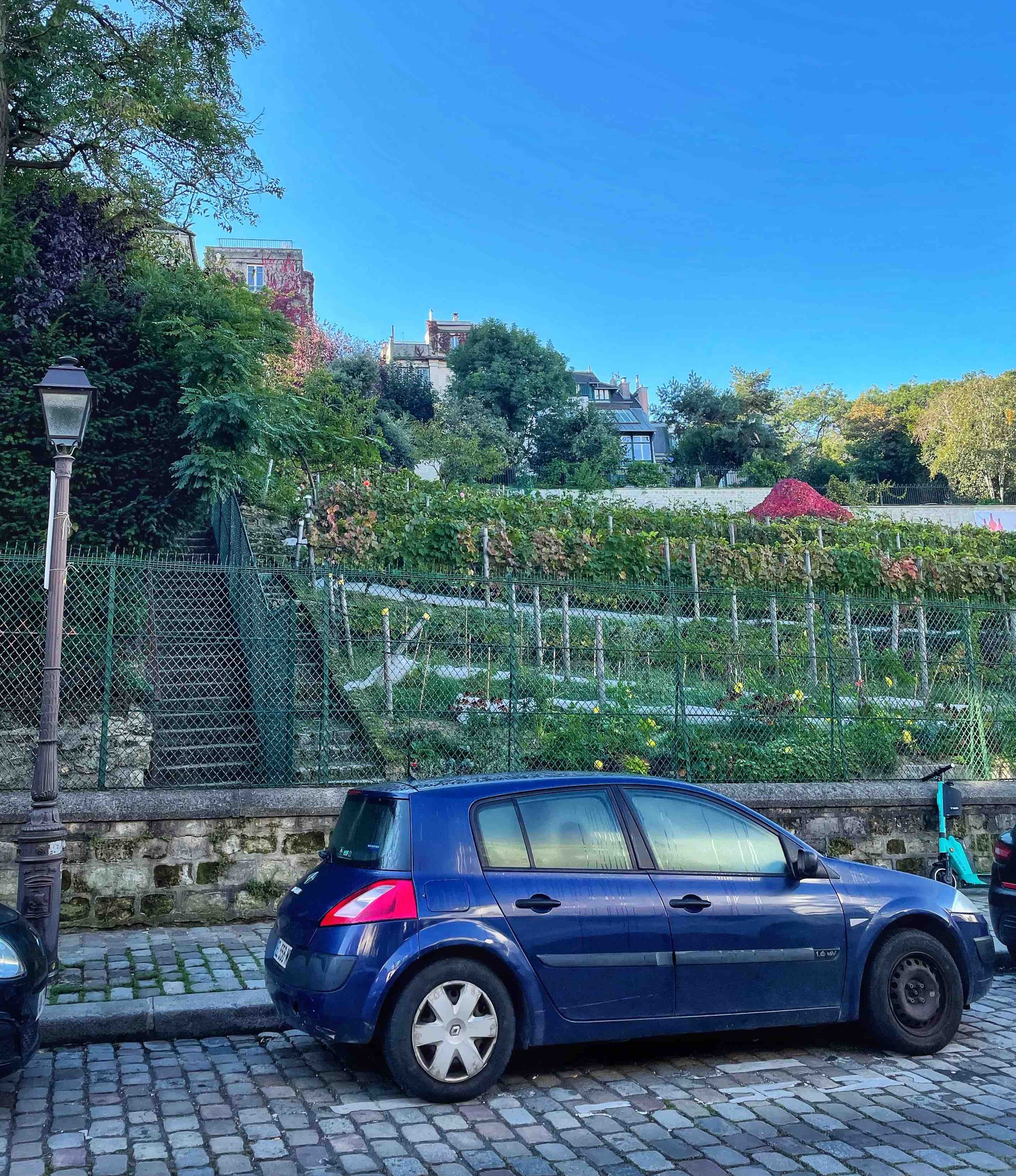Paris Travel Guide: Visiting the Vignes du Clos Montmartre
Hidden Paris: Visiting the Last Vineyard in Paris
First published: October 15, 2021
Last updated: February 1, 2023
The vines inside the Clos (vineyard) of Montmartre
Did you know there is a vineyard hidden in plain sight in Montmartre, just a couple of blocks behind Sacré Cœur?
The Vignes du Clos Montmartre has been in operation since 1933 and despite an abundance of excellent wine bars throughout this city, the Clos Montmartre is considered the last operational vineyard in Paris proper.
Visiting the Montmartre Vineyard in Paris
Inside the Clos Montmartre
There’s just one problem: the vineyard is typically closed to the public, with only a smattering of tours available throughout the year, and most are only during the fall. I was fortunate (and determined!) enough to secure a ticket to a vineyard tour during last weekend’s Fête des Vendanges.
The Fête de Vendanges is a popular multi-day wine harvest festival held in the 18th arrondissement of Paris each autumn, with loads of cultural and gastronomic activities.
Tickets to the vineyard tour through the Fête des Vendanges are free, but spaces are extremely limited and fill up quickly. It’s also important to note that this tour does not include a wine tasting and it is in French (no translation options as of the time of this writing).
For another tour option, consider Secret Journey’s Le Clos Montmartre tour, which includes a visit to the Musée Montmartre, wine tasting and a tour of the vineyard itself. If you are conversational in French, The Musée Montmartre also offers tours of the vineyard.
A (very brief) History of Montmartre
The interior of the Clos du Montmartre, with gorgeous early fall colors.
The Fête des Vendanges vineyard tour I participated in focused primarily on the history of Montmartre and how the vineyard came to be as part of that history. As far back as the 700s, the Montmartre hill (butte) was called Mont de Mars, or Mount Mars, which is likely how the village got its name that persists today.
Before it became the iconic haven for artists and musicians in more recent history, Montmartre was primarily known for its religious history, including a large abbey and as the location for the martyrdom of Saint Denis.
A view of Montmartrois buildings from inside the vineyard gates.
The area was quite rural, being outside of Paris proper until 1860, and was filled with vineyards, windmills, farms, and quarries for gypsum mines. From the mid-1800s through early 1900s, Montmartre quickly became a haven for artists (particularly impressionists), musicians, and people looking for a bucolic escape from the center of Paris.
The adorable gate handle at the Vignes du Clos Montmartre.
The History of the Clos Montmartre
The Clos (Vineyard) Montmartre itself was established by the local residents, neighborhood leaders and artists in 1933 in order to prevent an impending building development project in the area from moving forward. Why a vineyard in particular? French law prevents anything from being built on a vineyard.
However, the group didn’t stop there: from the beginning, the profits from the wine were intended to serve the local community. The fermentation process, bottling and selling of the wine is managed by the city and a local nonprofit organization. In fact, the fermatory and wine cellar are located in the basement of the neighborhood’s “town hall” (the mairie of the 18th arrondissement).
More Montmartre!
Looking for a thoughtful, flexible Paris travel plan? My Paris Explorer Guidebook, which includes a visit to the gorgeous neighborhood of Montmartre, is a seven-day guide to some of the most beautiful neighborhoods in Paris.
Discover hidden gems, some well-known landmarks, and all the best places to eat, drink and explore in Paris. Read what others have to say about my travel guide: Client Reviews.
Beyond Just Grape Vines
Unlike typical French vineyards that focus on regional grapes only, the Vignes du Clos Montmartre includes a large variety of grapes in the same small vineyard. Therefore, all of the Clos Montmartre wines are hybrids, or blends. I also learned on the tour that there are other things growing in the vineyard too, like kiwis, olives and strawberries!
The vineyard produces only about 1,000-1,500 bottles of wine per year and while the harsh growing conditions of a small plot of land in the middle of a major city may not produce the finest wine, I find it incredibly charming that this vineyard not only exists, but is intended to support the local community.
Where to Find the Montmartre Vineyard
A view of the Rue Saint-Vincent from the vineyard.
Although the vineyard is closed to the public, it is very much in plain sight and you can walk by anytime during the year. Especially considering the proximity to extraordinarily busy areas of this neighborhood, such as Sacré Coeur basilica and the touristy Place du Tertre, the Clos Montmartre is relatively unknown and its surrounding streets are surprisingly free(ish) of tourist crowds.
The gates to the vineyard are located at 18 Rue des Saules. Don’t miss a walk down some of my favorite streets located right next to the vineyard, including Rue Saint Vincent, Rue Cortot, Rue de l'Abreuvoir, and of course the whole of Rue des Saules itself.
The tiny square on the corner of Rue des Saules and Rue Saint Vincent, Square Roland Dorgelès, provides a nice raised viewpoint of the vineyard and the famous Lapin Agile cabaret house, which dates back to the late 1800s.
While walking around this area of Montmartre is beautiful any time of the year, I particularly recommend the fall if you can (late September through early November) so that you can enjoy the gorgeous fall-colored foliage and deep red vines that snake along the stone walls on Rue Saint Vincent and gorgeous houses on Rue Cortot.
Have you been to Montmartre and stumbled upon this tiny, hidden gem?
My visit to the Clos du Montmartre as part of the Fête des Vendanges (October 2021)
Let me know if you were able to spot this tiny vineyard when walking through the charming streets of Montmartre.
And if you’re able to visit the Clos Montmartre for yourself, I’d love to hear about your experience!
Bon voyage,
~ Lauren
PS - If you love Montmartre, you’ll love my photographs from the neighborhood. These are available in The Print Shop, so you can have a little memory of Paris in your home.
